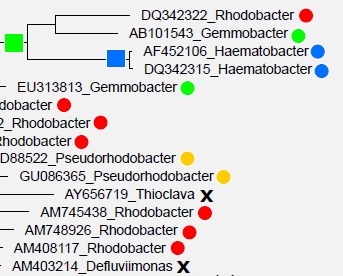Taxa defined by characteristic traits
See also
Microbial taxonomy
Taxonomic nomenclatures (naming systems)
Taxa known only from sequence
In taxonomy, a characteristic trait is a feature which defines a taxon, i.e. a named group of organisms. Most taxa have several characteristic traits. For example, mammals are defined by features including mammary glands, hair, giving birth to live young and being warm-blooded. Primates are mammals with grasping hands. Humans are primates who study taxonomy.
In microbial taxonomy, most lower taxa, especially species and genera, are defined by characteristic traits. For example, according to Bergey's Manual , Salmonella has peritrichous flagella, is non-spore-forming, Gram-negative , with cell lengths from 2 to 5 micrometers and diameters between about 0.7 and 1.5 micrometers. Rhodococcus has distinctly different traits, e.g. it is non-motile and Gram-positive .
 Most microbial taxa are known only from environmental sequences and their traits are therefore unknown. Taxonomy annotations for these sequences are usually computational predictions which are not very accurate, e.g. roughly one in five of the taxonomy annotations in SILVA and Greengenes are wrong . This is almost certainly explained by errors in the guide trees .
Most microbial taxa are known only from environmental sequences and their traits are therefore unknown. Taxonomy annotations for these sequences are usually computational predictions which are not very accurate, e.g. roughly one in five of the taxonomy annotations in SILVA and Greengenes are wrong . This is almost certainly explained by errors in the guide trees .

